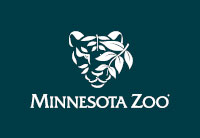 Bioko Island is a small island (2000 km2) twenty miles off the coast of Cameroon in West Africa. It is home to the capital city of Equatorial Guinea, 150,000 people, and some of the most endangered animals on Earth. Threatened primates include: Pennant’s red colobus monkey (Procolobus pennanti pennanti: designated by IUCN’s Primate Specialist Group as one of the 25 most endangered primates in the world), the Bioko black colobus monkey (Colobus satanus satanus), Stampfli’s greater spot-nosed guenon (Cercopithecus nictitans stampflii), Preuss’ guenon (Cercopithecus preussi), Bioko red-eared guenon (Cercopithecus erythrotis erythrotis), crowned guenon (Cercopithecus pogonias pogonias), and the drill (Mandrillus leucophaeus). The island’s southern beaches are also nesting sites for four species of endangered sea turtles: the leatherback (Dermochelys coriacea), the hawksbill (Eretmochelys imbricate), the Atlantic green (Chelonia mydas), and the olive ridley (Lepidochelys olivacea).
Bioko Island is a small island (2000 km2) twenty miles off the coast of Cameroon in West Africa. It is home to the capital city of Equatorial Guinea, 150,000 people, and some of the most endangered animals on Earth. Threatened primates include: Pennant’s red colobus monkey (Procolobus pennanti pennanti: designated by IUCN’s Primate Specialist Group as one of the 25 most endangered primates in the world), the Bioko black colobus monkey (Colobus satanus satanus), Stampfli’s greater spot-nosed guenon (Cercopithecus nictitans stampflii), Preuss’ guenon (Cercopithecus preussi), Bioko red-eared guenon (Cercopithecus erythrotis erythrotis), crowned guenon (Cercopithecus pogonias pogonias), and the drill (Mandrillus leucophaeus). The island’s southern beaches are also nesting sites for four species of endangered sea turtles: the leatherback (Dermochelys coriacea), the hawksbill (Eretmochelys imbricate), the Atlantic green (Chelonia mydas), and the olive ridley (Lepidochelys olivacea).
In the 1980’s, the capital city of Malabo at the northern end of Bioko became home to a commercial bushmeat market, selling monkeys, duikers, sea turtles, monitor lizards, and other large animals. Since then, wildlife has largely disappeared from the northern half of the island. At the island’s southern end, the Gran Caldera – a hollowed out volcanic crater, shields many animals from hunters with its steep gorges. As bushmeat supply decreases, however, and prices increase, hunters are making riskier and longer treks into the southern forests.
This project, run by the Bioko Biodiversity Protection Program, coordinates seven wildlife patrolling and monitoring teams in an effort to protect the island’s remaining wildlife and keep commercial bushmeat hunters out of protected areas. In 2008 and 2009, the Minnesota Zoo provided funding to help keep these patrols running. Staff champion for this project is Tara Harris, Conservation Biologist.



Get Social